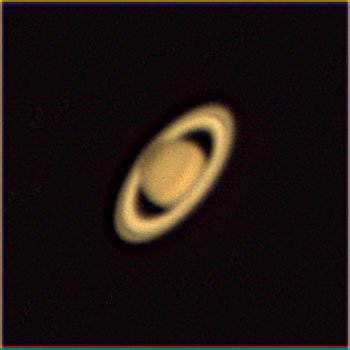I want to focus this column on the planet Saturn because it is at its most beautiful this month.
Saturn is close to opposition this month and this places it at an ideal place in the night sky to see it and its rings are as open as they can get. These characteristics make for very advantageous viewing and photographing.
Saturn is a gas ball about nine times the size of the Earth that is currently about 900 million miles from Earth. As big as it is, all that distance makes Saturn dimmer than Jupiter and only reasonably bright in a medium-sized amateur telescope.
What does it mean that Saturn is a gas ball? Mercury, Venus, Earth and Mars, the planets of the inner solar system, are all made of about the same stuff -- rock. The great volume of planets in the outer solar system -- Jupiter, Saturn, Uranus and Neptune -- are made of gases. One thing this means is that Saturn does not have a solid surface. Perhaps, deep in the center of the gas there is a solid core. This core could be rocky or some scientists have speculated that Saturn's core is made up of crystalline hydrogen. It is known by direct experiment on Earth that if hydrogen can be put under enough pressure and compacted, it can form a metallic, crystalline structure. We know well how much gravity Saturn has by careful study of the orbital characteristics of its many moons. All the gravity Saturn generates cannot be accounted for solely by its gaseous volume. There must be something denser in Saturn's core to account for the pull Saturn exerts on its moons.
Saturn's atmosphere is composed of hydrogen, ammonia, and methane as well as several other gaseous molecules containing hydrogen. If I examine its visible surface in my telescope, I can clearly see bands of darker gas. These bands reflect the Sun's light differently, depending on the composition of the gas molecules.
The ball of Saturn is good to look at but, by far, what makes Saturn stand out from all the other planets is its ring system. These rings are made up of debris that could not form into moons because the tug of Saturn's gravity would not allow it. There are three distinct rings that amateur telescopes reveal, but NASA flyby missions have revealed very many intricate rings -- truly beautiful.
Because of changes in Earth's orbit, we can sometimes see the rings quite open to view. This is occurring now and this is a good reason to view it now if you can get a look through an amateur telescope. At other times, Saturn's rings can actually disappear from view from Earth! Compared to Saturn's planetary ball, the rings are extremely thin. About every 14 years, the Earth-Saturn lineup is such that we see the rings exactly on edge. They disappear. I have seen this twice since I have been viewing Saturn since I was age 14.
You can see Saturn with the naked eye or binoculars by looking south at about 10:30 p.m. Of course, it may be difficult to find if you live in a light-polluted area, but under darker skies it is reasonably easy. It will be a bit yellow in binoculars and it will not twinkle as the stars do.
Jupiter is moving south-southwest in July but it is still easy to see. If you happen to be up at dawn, look for Venus low in the southeast of the morning sky. It will be very bright and will be what many people have called the 'Morning Star' though Venus is a planet, lying inside the Earth's orbit.
Again, under dark skies, now is the time to cruise the Milky Way with binoculars. It will be that faint band of stellar haze a bit east of overhead during July when the sky is full dark.
Keep viewing the night sky -- it is beautiful and it's free!
-- Dr. David Cater is a former faculty member of JBU. Email him at [email protected]. The opinions expressed are those of the author.
Community on 07/05/2017
